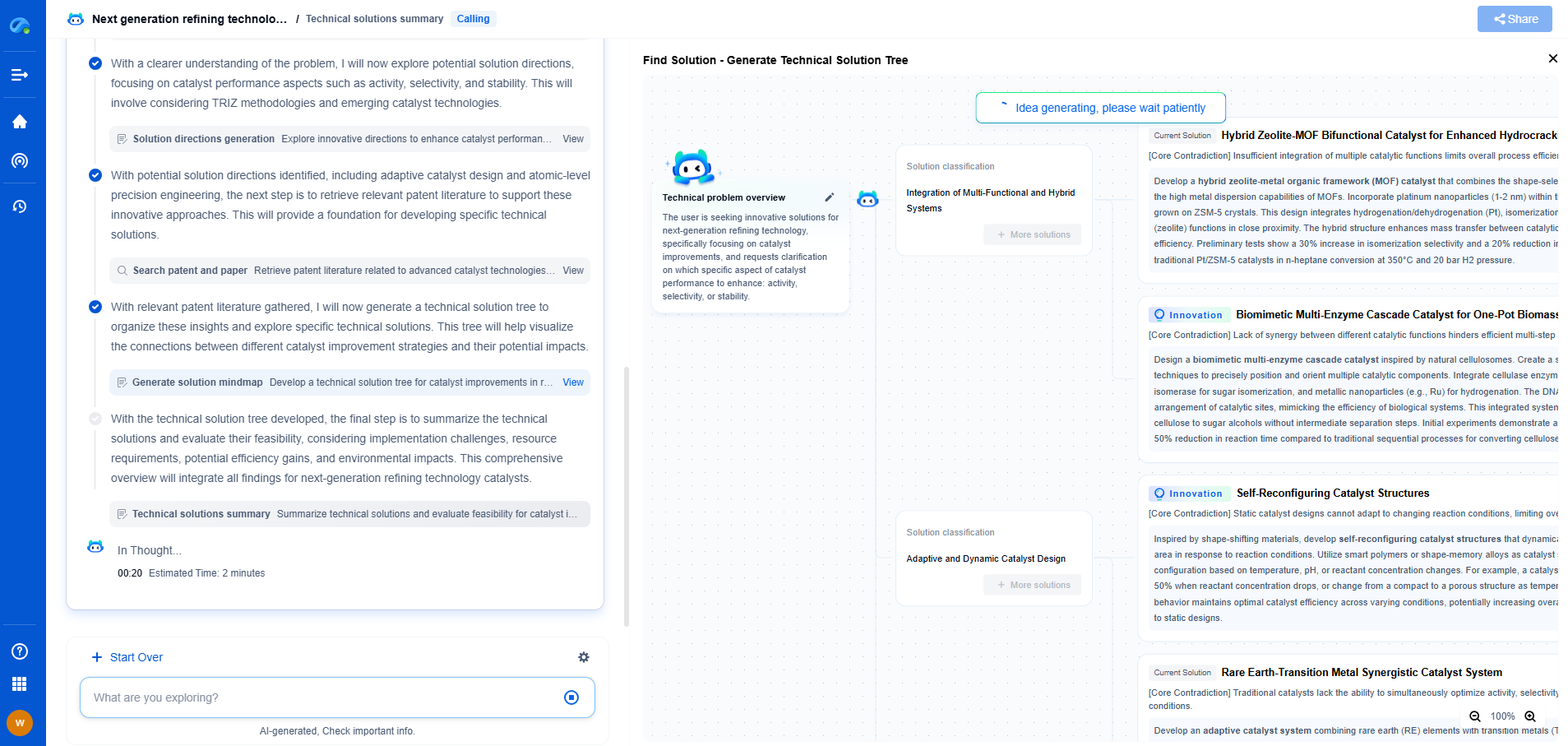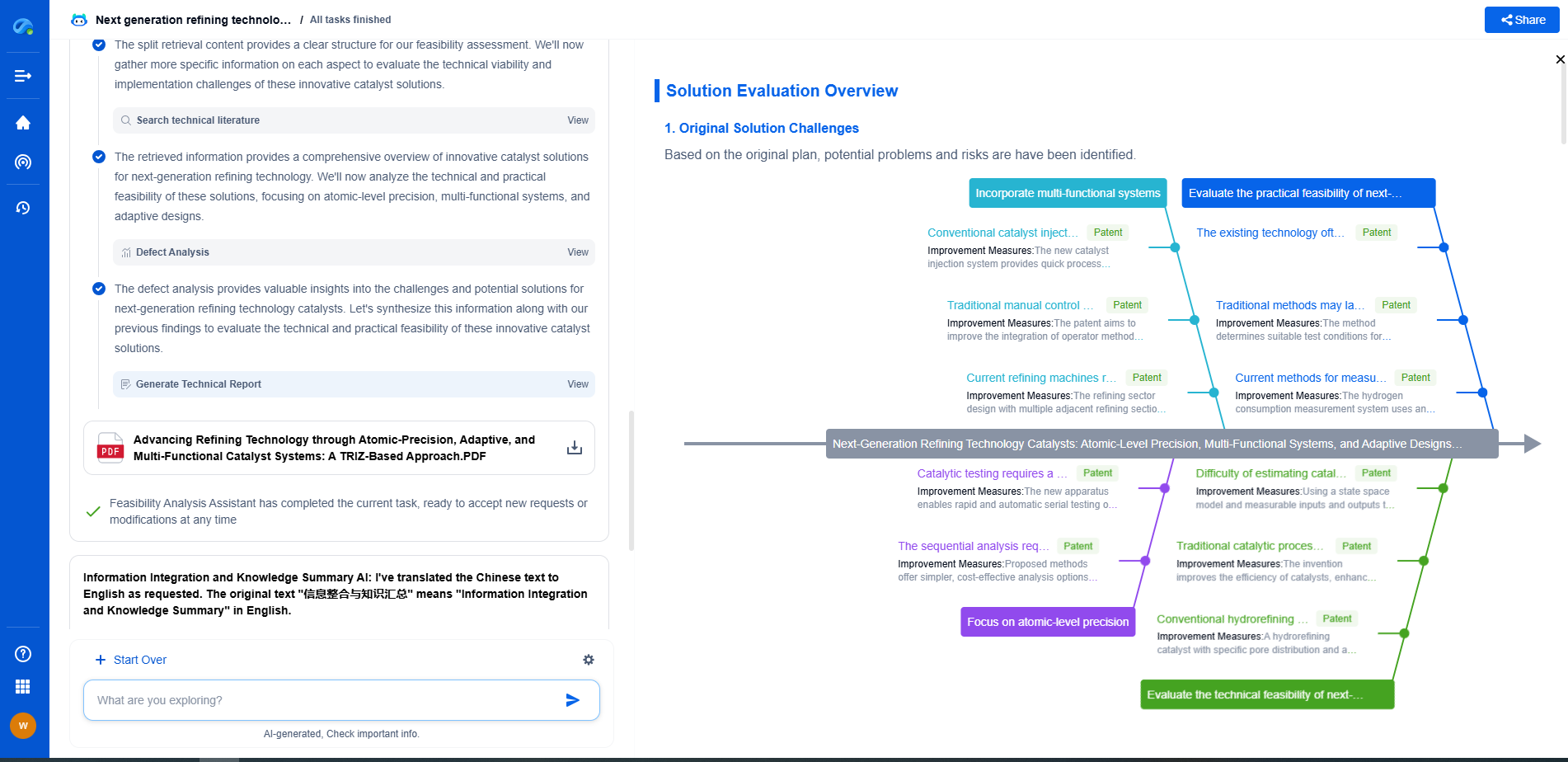Difference Between Feedforward and Recurrent Neural Networks
JUN 26, 2025 |
Neural networks are powerful tools in the realm of artificial intelligence and machine learning. They are designed to mimic the way human brains operate, processing information and learning from data. Among the many types of neural networks, feedforward and recurrent neural networks are two prominent models, each with distinct characteristics and applications. Understanding the differences between these two types of networks is crucial for selecting the right model for specific tasks.
Understanding Feedforward Neural Networks
Feedforward neural networks, often referred to as multilayer perceptrons (MLPs), are the simplest form of artificial neural networks. In a feedforward network, information moves in one direction—forward—from the input nodes, through the hidden nodes (if any), and finally to the output nodes. There is no feedback loop; hence, the data does not cycle back to the previous layers. This linear flow of information makes feedforward networks relatively straightforward to understand and implement.
The primary function of feedforward networks is to approximate functions. They are commonly used for tasks such as classification, regression, and pattern recognition. For instance, in image classification, a feedforward network can be trained to identify and classify objects within an image. The lack of feedback loops makes these networks unsuitable for sequence-based tasks, as they cannot store or recall previous information.
Structure and Functionality
Feedforward neural networks consist of multiple layers: an input layer, one or more hidden layers, and an output layer. Each layer comprises nodes or neurons that are connected to the nodes in the subsequent layer. The neurons are assigned weights, which are adjusted during the training process to minimize the error in predictions. Activation functions are applied to the weighted sum of inputs to introduce non-linearity, enabling the network to learn complex patterns.
The absence of recurrent connections limits feedforward networks to processing fixed-size inputs, making them ideal for tasks where the data does not have a temporal or sequential nature. Their simplicity allows for faster training and less computational expense compared to more complex networks.
Exploring Recurrent Neural Networks
Recurrent neural networks (RNNs), on the other hand, are designed to handle sequential data. Unlike feedforward networks, RNNs have connections that form cycles within the network, allowing information to persist and loop back through the nodes. This feedback mechanism enables RNNs to maintain a form of memory, making them particularly suited for tasks where the context or history of the input data is crucial.
RNNs are widely used in applications involving time series data, natural language processing (NLP), and speech recognition, where understanding sequences and patterns over time is essential. For example, in language modeling, RNNs can predict the likelihood of a sequence of words, taking into account the preceding words to generate coherent text.
Structure and Dynamics
The architecture of recurrent neural networks includes input, hidden, and output layers similar to feedforward networks. However, each neuron in the hidden layer can connect back to itself or to other neurons within the same layer. This recurrent structure allows RNNs to process inputs of varying lengths and retain information from previous inputs.
The capability to handle variable input sizes and maintain contextual information over time makes RNNs more complex and computationally intensive than feedforward networks. Training RNNs can be challenging due to difficulties like vanishing and exploding gradients, which occur during the backpropagation through time (BPTT) process. Techniques such as Long Short-Term Memory (LSTM) units and Gated Recurrent Units (GRUs) have been developed to mitigate these issues, enhancing the performance of RNNs in sequence-based tasks.
Key Differences and Applications
The fundamental difference between feedforward and recurrent neural networks lies in their ability to manage temporal dependencies. Feedforward networks are efficient for tasks that require a straightforward mapping from input to output without considering the order or temporal relationships between inputs. They excel in static data classification and regression tasks, where each input is independent of the others.
Conversely, recurrent neural networks are essential when dealing with sequential and time-dependent data. Their ability to remember previous inputs and maintain context makes them suitable for complex tasks such as language translation, sentiment analysis, and time series prediction. The choice between these networks depends largely on the nature of the data and the specific requirements of the task at hand.
Conclusion
In summary, feedforward and recurrent neural networks embody distinct architectures and functionalities tailored to different types of tasks. Feedforward neural networks are ideal for simple, non-sequential data processing, whereas recurrent neural networks offer the ability to understand and generate sequences by leveraging their internal memory capabilities. By comprehending these differences, researchers and practitioners can better align their neural network choices with the challenges they aim to solve, optimizing their machine learning models for success.
Unleash the Full Potential of AI Innovation with Patsnap Eureka
The frontier of machine learning evolves faster than ever—from foundation models and neuromorphic computing to edge AI and self-supervised learning. Whether you're exploring novel architectures, optimizing inference at scale, or tracking patent landscapes in generative AI, staying ahead demands more than human bandwidth.
Patsnap Eureka, our intelligent AI assistant built for R&D professionals in high-tech sectors, empowers you with real-time expert-level analysis, technology roadmap exploration, and strategic mapping of core patents—all within a seamless, user-friendly interface.
👉 Try Patsnap Eureka today to accelerate your journey from ML ideas to IP assets—request a personalized demo or activate your trial now.
- R&D
- Intellectual Property
- Life Sciences
- Materials
- Tech Scout
- Unparalleled Data Quality
- Higher Quality Content
- 60% Fewer Hallucinations
Browse by: Latest US Patents, China's latest patents, Technical Efficacy Thesaurus, Application Domain, Technology Topic, Popular Technical Reports.
© 2025 PatSnap. All rights reserved.Legal|Privacy policy|Modern Slavery Act Transparency Statement|Sitemap|About US| Contact US: help@patsnap.com

